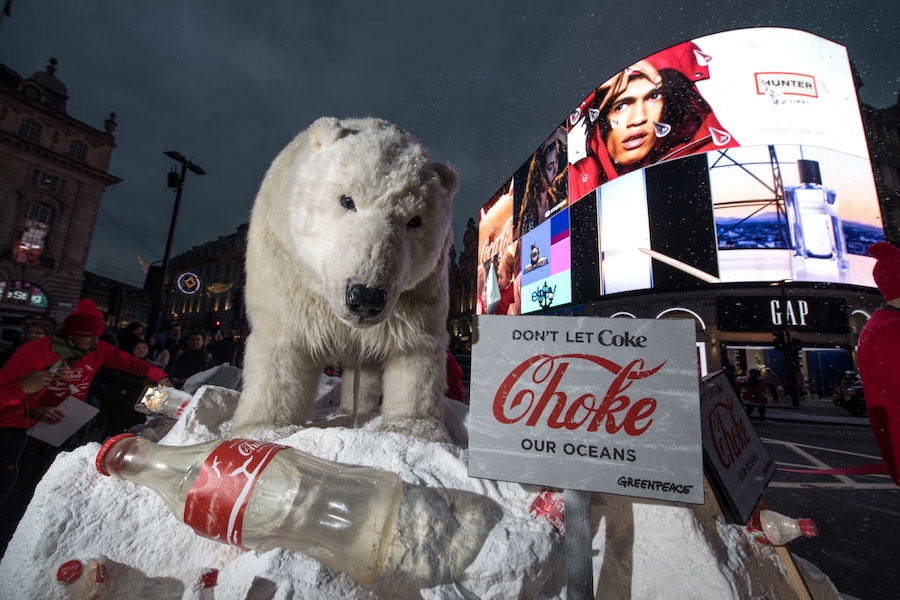This post was originally published on Eco Watch
Coca-Cola products will be responsible for up to 1.33 billion pounds of plastic waste making its way into the planet’s oceans and waterways each year by 2030 — enough to fill the stomachs of more than 18 million blue whales, according to a new report by nonprofit Oceana.
Coca-Cola’s World With Waste projects that the company’s plastic use will be more than 9.1 billion pounds annually by 2030 if its practices do not change. That would be an almost 40 percent increase over Coca-Cola’s reported 2023 plastic use, which was enough to go around the world over 100 times, a press release from Oceana said.
“Coca-Cola’s future is currently tied, like an albatross around its neck, to single-use plastic,” said Matt Littlejohn, senior vice president at Oceana. “Single-use plastic is bad for the oceans, human health, and business. Recycling can’t solve the company’s out-of-control plastic problem. Reuse can.”
The report found that if Coca-Cola reached 26.4 percent reusable packaging — an increase of 16.2 percent from 2023 numbers — it could “bend its plastic curve.”
Reusable plastic bottles can be used as many as 25 times, while reusable glass bottles can be used up to 50 times, avoiding the production of as many as 49 additional single-use bottles.
A study published last year in the journal Science Advances found Coca-Cola to be the biggest producer of branded plastic waste found in the environment.
“Unfortunately, the Coca-Cola Company communicated in December 2024 that it had discarded its goal to increase reusable packaging to 25% of the company’s sales,” Oceana said.
The company announced that, instead of its previous goal, it will focus on ramping up its recycled content, as well as on collecting its single-use plastic bottles to be recycled.
However, as the Oceana report details, selling single-use plastic packaging with recycled content and the collection of plastic for recycling will not lower Coca-Cola’s overall plastic footprint.
“Single-use plastic bottles made with recycled content can — just like bottles made of virgin plastic — still become marine pollution and harm ocean life,” Littlejohn said.
Coca-Cola currently operates refillable systems in some countries, including Nigeria, Brazil, Germany and some areas of the United States, like southern Texas, reported The Guardian.
“They have the largest reusable infrastructure of any beverage company and they have the ability to grow that and show the way for the rest of the industry,” Littlejohn said, as The Guardian reported.
The multi-billion-dollar company could face more criticism due to mounting public concern regarding plastic’s impact on human health, the press release said. Studies have increasingly connected the chemicals used in the manufacturing of plastics with health problems such as heart disease, cancer, diabetes, autism and infertility.
If Coca-Cola won’t address its global plastic problem, Oceana recommended policymakers consider taking steps to make sure the company’s plastic footprint is reduced.
“The Coca-Cola Company’s plastic use and status as one of the most famous plastic polluters in the world is a liability for the future of the company, the oceans, and the planet. Coca-Cola needs to take real action to address its plastic problem now instead of focusing on measures that don’t meaningfully reduce its single-use plastic footprint,” Littlejohn added.
The post Coca-Cola’s Plastic Waste Polluting Oceans Projected to Reach 1.3 Billion Pounds per Year by 2030: Oceana Report appeared first on EcoWatch.





0 Comments